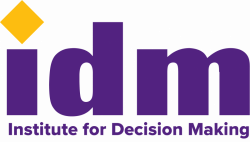Talent Development - You Must Focus
Posted on Friday, September 2nd, 2016
Are you and your employers hunting for workers under every rock and in every nook and cranny? It is not an easy expedition, nor for the faint of heart. Successful models, especially for our rural clients, are few and far between. What has become clear to us is that developers need to lead their communities using a rifled, targeted system rather than a scattered shotgun approach.
A shotgun approach – letting local leaders get caught up in rhetoric about, “just needing bodies” or expending marketing dollars and collaborative energy on attracting or retaining loosely-defined talent will look like a hunt, but bag little success. The patient and efficient developer will aim her or his programming on specific, well-defined targets of talent, hunting where and when they are most likely to have success. Here is a brief field guide for planning your next outing.
Understand your target
Do you really know what you need? It’s a simple supply versus demand equation, but with many variables! What is your local issue? An aging workforce? A declining population? Unskilled workers? Mismatched skills? Overall educational levels not high enough? All of these? An extensive analysis into your current situation can help you assess your local businesses’ workforce needs. Both primary and secondary research are best to fully understand the scope of what your community or region has or needs in regard to current and future workforce.
A good assessment will look at your workforce situation from several perspectives including business and industry, existing regional workforce and the local talent pipeline. Employer surveys, industry trend analyses and other data can paint a picture of the types of skills your employers presently seek in employees and what they will need in the future. Further study of the current workforce will inform you as to the immediate availability of human capital and identify existing skillsets and where gaps may exist. Finally, map out your talent pipeline. This will catalog current and projected training programs and compare them to likely industry growth and skill requirements to identify training gaps, system barriers and other weaknesses, e.g. workforce retention.
Once you understand the existing and future needs (in terms of skillsets and numbers) of your employing industries and talent supply gaps, you will find that there are a finite number of possible outcomes that you can use to target your efforts effectively. The following field notes outline the potential outcomes and possible actions you may want to think about for your workforce solutions. As always, IDM is here to help. We can customize services to fit your needs, wherever you decide you need to go in your hunt, from assessment to pipeline development to marketing.


